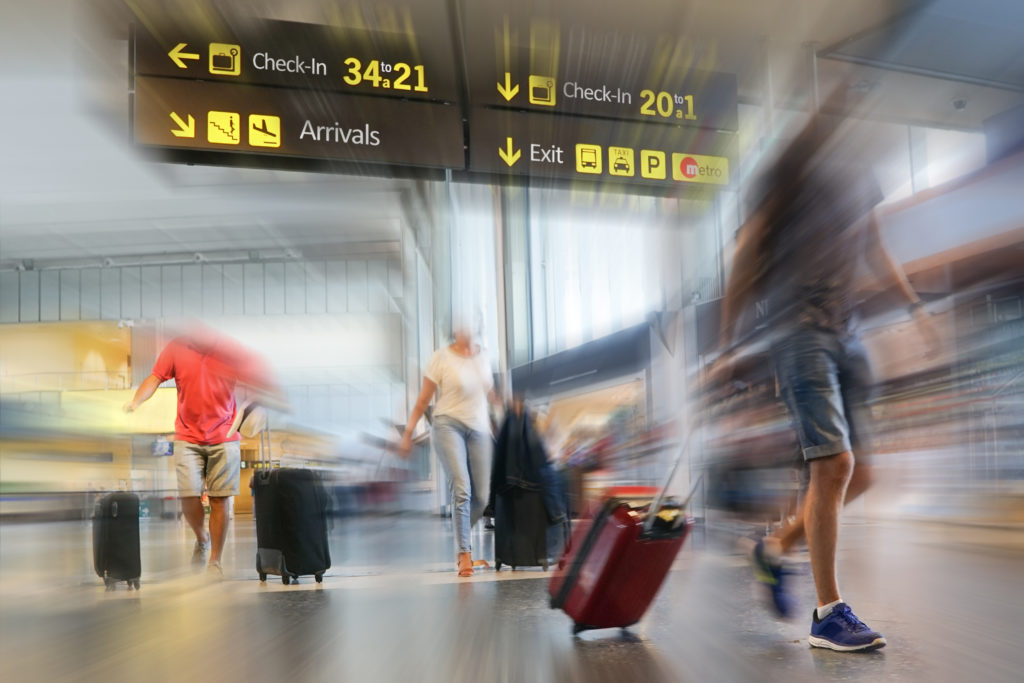Siobhan Boyle, product marketing manager for predictive collaboration platform Veovo, looks at how airports are reinventing the airport check-in experience to handle the growing number of travelers
As airports handle record numbers, crowded check-in halls are becoming more commonplace, prompting airports to rethink their approach to space, resources and the passenger experience.
As such, common-use terminals are gaining popularity as an efficient way to accommodate passengers. With multiple airlines sharing airport space, including counters and bag drops, airports can manage resources better to meet demand and improve throughput.
Time for a holistic approach
Sharing resources presents its own challenges. How can airports optimize the check-in process for efficiency while smoothing the travel experience? How do they balance the needs of full-cost and low-service airlines in one terminal? And, how do they adapt to growing preferences for online or self-service check-in?
Without a holistic view of check-in areas and the right insight tools, it’s challenging to achieve the right quality/cost balance for airline customers and the passenger experience. The shift to common-use resources, therefore, requires a new approach.
Optimizing space
Typically, hall allocation is stacked in favor of heavy-hitting airlines – not toward the best use of available space. When allocating check-in resources, consider the entire terminal. Collect and analyze queue formation data, plus processing rates by counter and airline, to identify congestion or safety issues. As well as being used for allocating a fixed resource, a holistic view also helps determine the optimum location for self-check-in kiosks.
Predicting passenger behavior
Traditional check-in models allocate static desks per flight for three hours. This results in uneven capacity management. Data from Dolby and Holder Consulting suggests that fixed counter timeframes cause a 40% decrease in capacity, require 22% more handling agents, and reduce passenger dwell time by 22 minutes.
By layering show-up profiles with check-in preferences per flight, airports can more accurately predict resource demand. Keflavik Airport in Iceland, for example, successfully adjusted worker shifts based on forecast arrival/wait times, optimizing costs and services.
Automating resourcing decisions
With sophisticated, often conflicting check-in resource planning considerations, intelligent allocation tools enable airports to automatically balance resource availability and predicted demand with factors like airline preferences and service level agreements.
Models are optimized for maximum efficiency, for instance, grouping airlines by ground handler to reduce baggage errors. Passenger experience factors, like walk time, can also be addressed by coordinating resource allocation from check-in to gate.
Intelligent automation both optimizes resources for blue-sky days and allows for flexible planning for unexpected events and improved impact forecasting. When Sydney Airport, Australia, implemented a holistic approach to check-in together with automated resource allocation, capacity increased by 15%.

Incentivizing better throughput
Directly linking resourcing to billing allows airports to demonstrate the financial and efficiency benefits of resource-sharing to airline partners, whose early engagement is critical in any operations process transformation.
Differentiated charge structures can also be used to incentivize airline efficiency including the uptake of dynamic counter allocation and self-serve check-in kiosks. For instance, Auckland Airport, New Zealand, differentiates charging for check-in services to distinguish between traditional counters, common-use versus dedicated bag-drop facilities.
This holistic, predictive collaboration approach to check-ins helps reduce queues and improve the passenger experience – and happy travelers tend to spend more time and money in concessions.
Airports and airlines win too. More fluid check-in resource usage and efficiency gains enable airports to defer expansion investments and introduce common-use self-check and baggage drops, further increasing capacity. A holistic terminal approach really is a common solution for all.
Interested in hearing more from Veovo? Magnus Bojlert, Regional Operations Manager EMEA – Veovo, will present ‘Unlocking untapped capacity with intelligent automation and a connected ecosystem’ at this year’s Passenger Terminal Conference, which takes place during Passenger Terminal Expo, 26, 27 and 28 March 2019, in London. Register here for your delegate pass.

